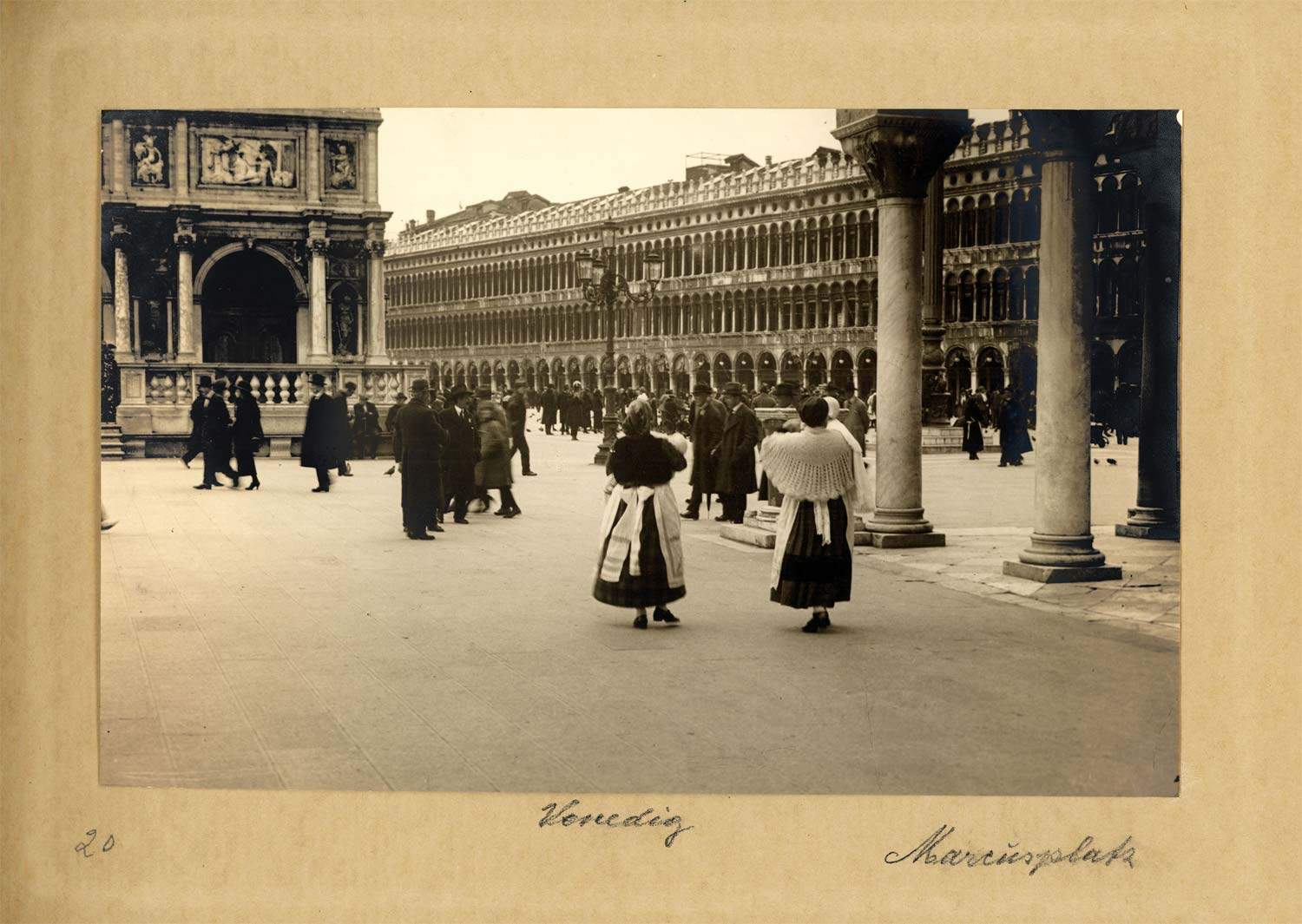The exhibition The Halberstadt. Michèle searching for Max, currently underway at the IKONA Photo Gallery in Venice, chronicles the intimate journey that French writer and film producer Michèle Halberstadt decided to take in the search for her origins. Highlights of her discovery find their image here through the photographs of Max Halberstadt (1882-1940), one of Hamburg’s best-known portrait photographers of the 1920s. The iconic portraits of his father-in-law, the neurological physician Sigmund Freud, together with the Venetian and Hamburg shots become in the exhibition and for Michèle, an opportunity for storytelling and reconstruction of the history of the “Halberstadts” and memory of the great upheavals that characterized the first half of the twentieth century.
The master text of this exhibition is Michèle Halberstadt’s book Née quelque part, published by the Albin Michel publishing house in 2021. “Born somewhere,” in Italian, puts in writing the stages the author traveled in her search for her origins and roots. Between Hamburg, Vienna, Halbers- tadt and Wegrow, where her father David, a Polish Jew, was born, Michèle traveled and flipped through archives looking for that “somewhere” of her history and name.
Max Halberstadt, trained in Munich, Paris and Basel, set up his first photography studio in 1907 in Hamburg, at the age of only 25. After serving during World War I, his work immediately won great recognition, conferring him publication and publicity in some of the most important photography magazines of the time, such as Hamburger. Theater-Zeitung, Das Atelier Des Photo Graphen and Photofreund. His research and interest were directed not only to the field of portraiture but also to landscape photography with a special focus on city life. Max loved to capture seemingly insignificant moments of everyday life in static documentary photographs. The market in Hamburg, the Bridge of Sighs and St. Mark’s Square in Venice today open an important glimpse into the social history of city life in those years.
Such refined and sophisticated style of his photographs did not go unnoticed even by the Austrian neurologist and philosopher Sigmund Freud, who visited him to put a face to his early publications and scientific essays. The mutual professional trust and esteem generated by this meeting soon embraced the family one as well, when Sigmund gave his daughter Sophie in marriage to Max.
The exhibition The Halberstadt. Michèle searching for Max showcases the writer’s photos, documents, and intimate, personal comments on the fates of the Halberstadts. The photographs presented punctuate through images the words of her search. Max’s escape from the Nazis to Johannesburg, the death of Michèle ’s father’s sisters Hinde and Mindel in the Treblinka death camp, as well as Sophie’s disappearance from Spanish influence, are illustrated here in the form of a micro-narrative, but also as a document and memory of what was the macro-history of the Jews in the twentieth century.
For all information, you can visit the official IKONA Photo Gallery website.
Pictured: Sigmund Freud. Ph. credit: IKONA Photo Gallery
 |
| Venice, Michèle Halberstadt's journey through Max Halberstadt's shots on display |
Warning: the translation into English of the original Italian article was created using automatic tools. We undertake to review all articles, but we do not guarantee the total absence of inaccuracies in the translation due to the program. You can find the original by clicking on the ITA button. If you find any mistake,please contact us.